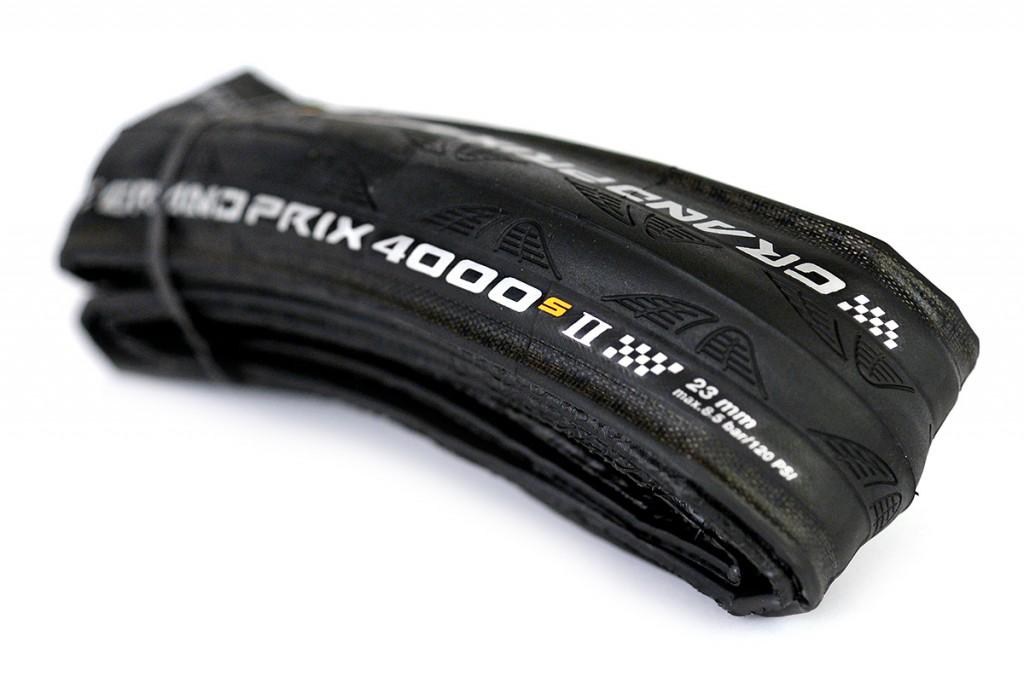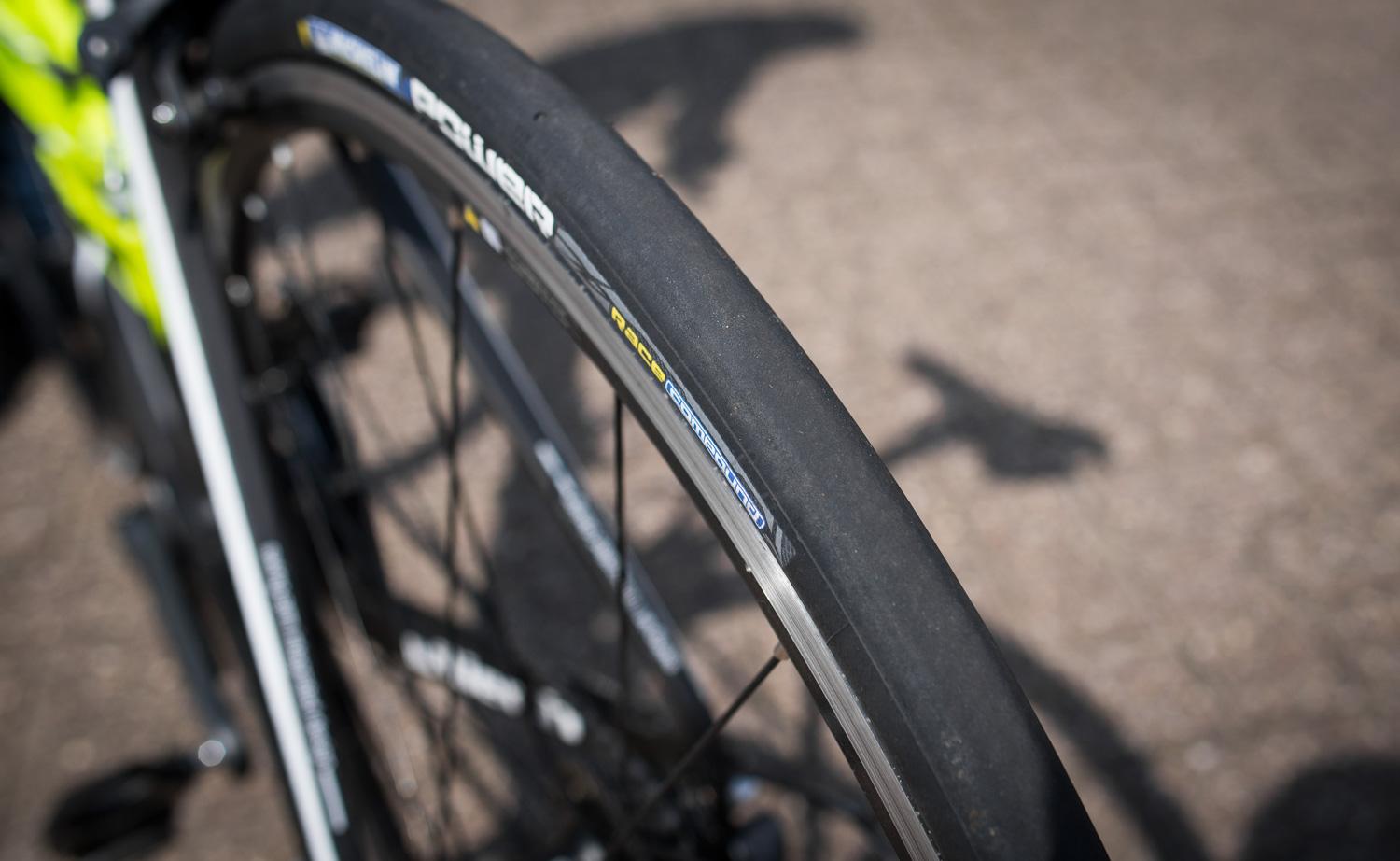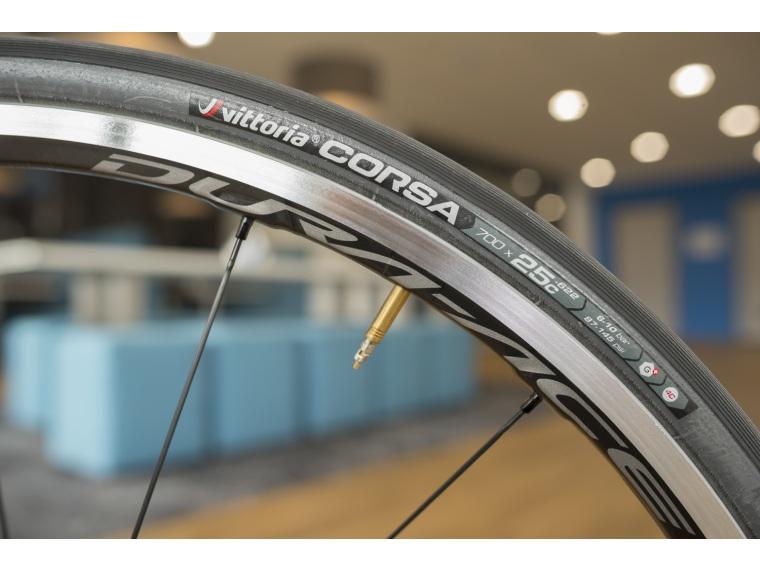Alternatives to the Grand Prix 4000S II
Tyre choice has always been a touchy subject. All tyres have to perform in a number of areas. The problem is: excelling in one of them often goes at the expense of another. For instance: tyres with low rolling resistance almost always score badly on puncture resistance. The Continental Grand Prix 4000s II has always been one of those tyres which magically seems to do it all, which is why it’s a beloved choice by many a rider!
Like any other tyre however, the Grand Prix 4000s II has its downsides. So what are they, and what alternatives are available to take on the might of the GP?
The Big Five
We’re not talking animals here- we’re referring to the 5 properties on which most tyres are judged: grip, rolling resistance, durability, puncture protection, and weight. Combining all 5 is -at least for the time being- a dream, but tyres are often capable of excelling at several of these, albeit at the expense of others.
A tyre might offer tremendous grip, low weight, and little rolling resistance. In order to achieve this, the manufacturer has had to use less material and more flexible material. This slimmer, more flexible design also means sharp items will have less trouble finding a way in, causing punctures.

The more delicate compound -which is often softer to offer more grip- will also wear out quicker, causing the tyres to become “boxy” rather than round.
Alternatively, a long-lasting, puncture resistant tyre could keep going for ever. The harder, thicker rubber won’t be able to conform to irregular surfaces as much however which means less grip and more weight.
The perfect bicycle tyre doesn't exist
You’re getting our drift; making the perfect tyre is impossible, and there’s always a trade-off to be made. Some tyres can be categorised as all-round tyres, meaning they do reasonably well in all areas but don’t excel at anything in particular.
These tyres are some of the more frequently used ones, as they offer a more diverse range of applications. Comparisons between various tyres are often based on feel and experience, and frequently feature the “I’ve been using it for years myself!”-argument. So where does the Grand Prix 4000s II come in?

The GP easily conforms to the road surface because of the softer rubber compound. This compound is more susceptible to punctures however and will wear out quicker. They’re quick then, but at the expense of puncture resistance and durability.
It’s been one of the most popular tyres for years now, and it started with the original Continental Grand Prix 4000s. The current Grand Prix 4000s II is fairly all-round in its performance, and frequently ranks amongst the top tyres in various tests.

This doesn’t automatically mean it’s the best tyre out there however: it all depends on what you want from a tyre: high levels of grip, or perhaps it’s durability and puncture resistance. If so, another tyre might be a better choice for you!
Alternatives to the Continental Grand Prix 4000s II
There are various tyres available which have the Conti beat in one or more areas. Below is a short and certainly non-exhaustive list of alternatives to what can be considered the king of road bike tyres.
Grip
When it comes to grip, the Grand Prix 4000s II scores highly, but there are a few tyres which have it beat here. The brand-new Michelin Power Competition for instance will help you stick to the tarmac like no other.
The Vredestein Fortezza Superiore and Vittoria Corsa G+ also spring to mind, both of which offer top racing-performance and will help you carve up any corner you encounter.
Rolling Resistance
The Grand Prix 4000s II offers low rolling resistance and is loved by many racers and serious recreational riders alike. They’re not the only low-resistance tyres out there though: the Veloflex Record is an extremely fast tyre, but also one which is easily damaged and wears out quickly.
Other tyres which do well when it comes to low resistance are the Michelin Power Competition, Vittoria Rubino Pro Speed, and lets not forget about the GP’s speedy brother: the Grand Prix TT tyres. While these are incredibly quick, they do tend to wear out fast and offer very little puncture protection.
Durability
The Grand Prix 4000s II lasts really well, despite not being a fully-focused high-mileage tyre. The basic Continental Grand Prix tyres manage to last marginally longer, while the Schwalbe Durano and Vittoria Rubino Pro Endurance both emphasise durability.
Another relatively new entry into this sector is the Michelin Power Endurance, which shows real promise when it comes to durability.
Weight
The Grand Prix 4000s II isn’t a heavyweight by any means at just 205 grams for the 23 mm version. True weight weenies will want to shave a few more grams off of that figure though.
Scoring slightly better than the Grand Prix 4000s II are the Michelin Power Competition tyres as well as the Vredestein Fortezza Superlite. At just 195 grams for the latter, these manage to take off even more weight from the overall rotational mass of your bike.
Puncture Protection
While the Grand Prix 4000s II isn’t prone to suffering punctures because of the hardened tread, there are tyres which have been more specifically designed to prevent punctures.
The Schwalbe Durano Double Defence features two protective layers, making punctures not impossible, but highly unlikely. The downside is decreased grip and speed. The Vredestein Fortezza Xtreme Weather and Michelin Pro Endurance also score well on this area.
Tyre Width
These days, 23 mm is slowly being replaced by the more common 25 mm tyre. Not only are these tyres a little more comfortable, they offer decreased rolling resistance as well over their slimmer counterparts.
In fact, some riders have even started using 28 mm tyres to further increase their comfort on the bike. Wheel manufacturers have spotted this trend and jumped in by offering wider rims than a few years ago.
The Current King of the Road
While we’ve listed a host of tyres which outperform the Continental Grand Prix 4000s II in one or more areas, none quite seem to do any better when it comes to all-round performance. Granted, there are faster tyres if you’re a time trialist, or more durable ones to ride with during winter.
As a jack of all trades however, it’s hard to best the Grand Prix 4000s II. It’s not without reason that they’ve been one of our best-selling tyres for several years in a row now!
So what do you ride? 23, 25, or even 28 or 30 mm? Do you swear by the Conti’s, or do you have something else entirely adorning your wheels? Let us know in the comments below!
Bart van Es
My heart stilll lies with my boat, though it's forever being tugged at by the bike. I spend most of my time on or around the water, either as a rower or a coach. However, I'm always up for a blast around the countryside after work with my colleagues! Proud owner of a Giant TCR Composite, and addicted to upgrading it...
Related posts

Winter shoes for cycling on chilly, cold and ice cold days [Buyer’s Guide]
13 December 2022You demand more from your cycling shoes during winter. Few things are as uncomfortable as riding with cold feet ...

Turbo Trainers 2018-2019 - Which Trainer Best Suits Your Needs? [Buyer’s Guide]
13 October 2022Want to cycle with and against fellow cyclists using a turbo trainer at home? Thanks to the rise of Zwift that’s ...

Bike Lights Buyer’s Guide 2022-23: Be safe on the road!
27 September 2022Having bike lights might be the easiest and most important way to be safe whilst cycling ...
 Nederland
Nederland België
België Deutschland
Deutschland United Kingdom
United Kingdom Finland
Finland Ireland
Ireland Luxembourg
Luxembourg Portugal
Portugal Poland
Poland Österreich
Österreich France
France España
España Italia
Italia Sverige
Sverige Danmark
Danmark











































































































































































































































